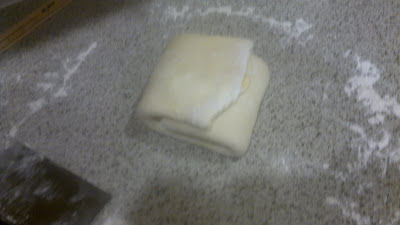This is from the Bluestem cookbook that my sister (whom I love to antagonize) gave me. Well, the Bluestem was the starting point. Had to substitute some ingredients, as noted. I made this for two, halving the recipe that follows. I am also giving some notes along the way.
So, for four, here are the ingredients:
Herb Cream
1 cup heavy cream
4 egg yolks
2 cups loosely packed fresh chervil
2 cups loosely packed fresh flat-leaf parsley
2 tablespoons fresh thyme leaves
Salt and freshly ground white pepper
Here's the substitutes on the herb cream that I used. First, chervil was not available, so, I used curly leaf parsley. Also, instead of white pepper, I always like to use crushed red chili peppers.
Mushrooms
2 tablespoons unsalted butter
8 ounces porcini mushrooms, trimmed and halved lengthwise
2 large shallots, finely copped
2 cloves garlic, chopped
Ok, so, fresh porcini mushrooms are hard to find. The book suggests that if you can't find porcini, use cremini. Sorry, I substituted shitake.
Vinaigrette
1 tablespoon plus 1 teaspoon banyuls vinegar
1 tablespoon extra-virgin olive oil
Pinch of salt
Ok, banyuls turns out to be a brand name. Not carried around here. So, use a sherry vinegar.
Fish
1 1/2 pounds russet potatoes, peeled
4 (6 ounce) halibut fillets
Salt and freshly ground white pepper
1/4 cup vegetable oil
Ok, 1 1/2 pounds of potatoes, I found out, is too much. Can do it with 1 pound. Also, again, used crushed red chili peppers. Also used olive oil.
To prepare.
First, make the herb cream: Bring the cream to a simmer in a saucepan. Put the egg yolks into a blender. With the blender running, drizzle in the hot cream to temper the yolks. Let it emulsify and thicken. Add the chervil, parsley and thyme and puree until smooth. Season with salt and pepper. Keep warm until ready to serve.
I noticed that it would dry out on the stove while keeping warm. So, be sure to have some liquid (water, wine) on hand to keep the thickness correct.
Now the mushrooms. Heat the butter in a skillet over high heat. Sear the mushrooms, cut side down, for a couple of minutes, at the most, until browned. Add the shallots and garlic and continue cooking just until the shallots turn translucent. Remove from heat and cover to keep warm.
Make the vinaigrette. Whisk together the vinegar, olive oil and salt to make a vinaigrette. Set aside.
Prepare the fish. Grate the potato using a box grater. Gather the grated potato in a clean kitchen towel and squeeze all the liquid out. Transfer the grated potato to a bowl.
Preheat the oven to 375 F. Season the fish with salt and pepper.
Season the potato with salt and pepper. Divide the potato into the same number of fillets that you have. Smash the potato into rectangles that are a wee bit bigger than the fillets. Lay a fillet over each group of potato. Using a sharp knife, outline the perimeter of each fillet, trimming away the excess potato around the edges.
Heat the oil in a large, ovenproof saute pan over medium heat. When the oil is hot, carefully place the fish, potato side down, in the pan and cook until golden brown about 2 1/2 to 3+ minutes. Using a wide spatula, carefully flip the fish over. The potato crust should come cleanly away from the skillet and adhere to the fish. Transfer the skillet to the oven and roast the fish for 4 minutes.
Toss the mushroom mixture with the vinaigrette.
Spoon some herb cream onto each plate. Top the cream with a fillet. Divide the mushrooms among the plates and serve immediately.
Ok, now for the pictures!
Here's the ingredients.
Here's the yolks in the Vitamix, waiting for the warm cream!
And, here is the Vitamix after pureeing the cream.
The herb cream, on the stove, keeping warm. Next time I will probably float some cream on top as well. Even though I had it covered, it thickened up and I had to add liquid to it.
Here's the vinaigrette, the mushrooms, shallots/garlic and butter:
The grated potato, after the liquid had been squeezed out, along with the fish.
Sauteing the mushrooms!

And . . . here it is plated! Served with carrots, broccoli and beets. There are more than enough mushrooms. I figure what Bluestem lists for mushrooms could be for 8 not 4. Also, the herb cream could easily be for 16 servings! Don't need that much!



















































